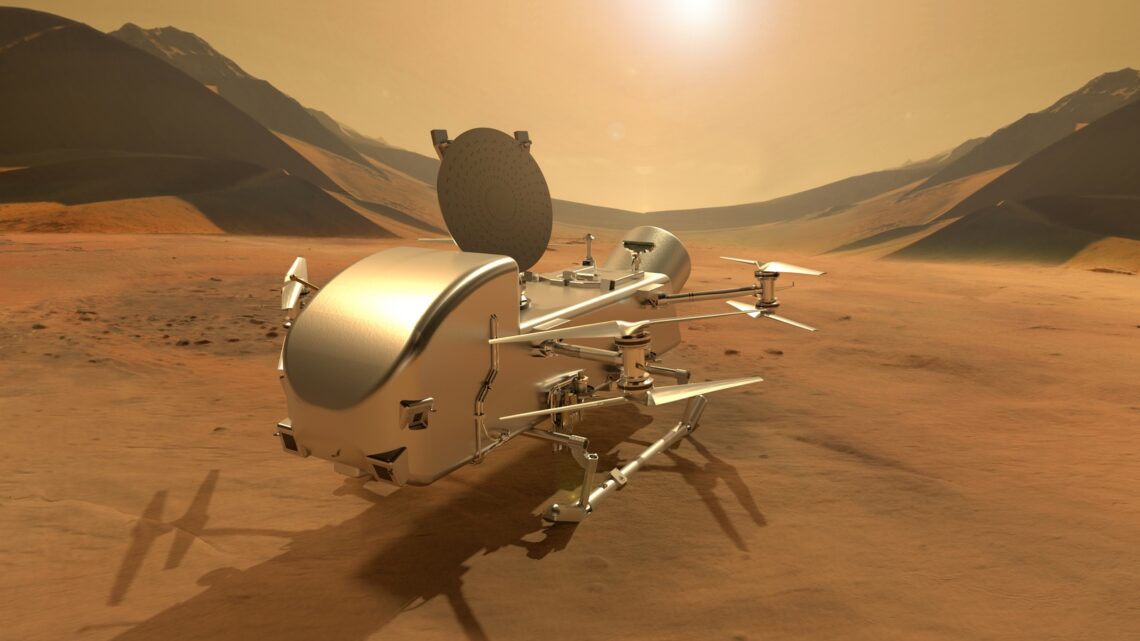WASHINGTON — NASA has approved for development a mission to Saturn’s moon Titan despite a cost that has doubled since the agency selected the mission nearly five years ago.
NASA announced April 16 that the Dragonfly mission had passed its confirmation review. Passing the review allows Dragonfly, a nuclear-powered rotorcraft that will travel to various locations on Titan to study the moon’s habitability, to move into full-scale development.
The mission went through part of its confirmation review last fall, but the agency said in November that it would defer a final decision on the mission until the spring, after the release of the fiscal year 2025 budget proposal. NASA also announced then that the launch of the mission, previously scheduled for July 2027, had slipped a year to July 2028.
The confirmation review sets a formal commitment by NASA to the cost and schedule for a mission. NASA said that it confirmed a July 2028 launch for Dragonfly and a total mission cost of $3.35 billion.
That cost is far higher than what NASA approved when it selected Dragonfly in June 2019 as its latest New Frontiers mission. At that time, the mission had a cost cap of $850 million for what NASA designates as Phases A through D, which excludes launch and operations after launch.
NASA, in its announcement about the confirmation, acknowledged the total lifecycle cost, which does include launch and operations, was double from what that earlier estimate. The agency blamed several factors, including replanning due to budget constraints, impacts of the pandemic and supply chain challenges, and an “in-depth design iteration.”
In a statement to SpaceNews April 19, NASA said the costs included in that original cap increased from $1 billion in “real year” dollars, adjusted for inflation, to $2.1 billion, hence the statement that costs had doubled.
“In each of the three fiscal years following Dragonfly’s selection, NASA imposed a cost cap in the…
Read the full article here

